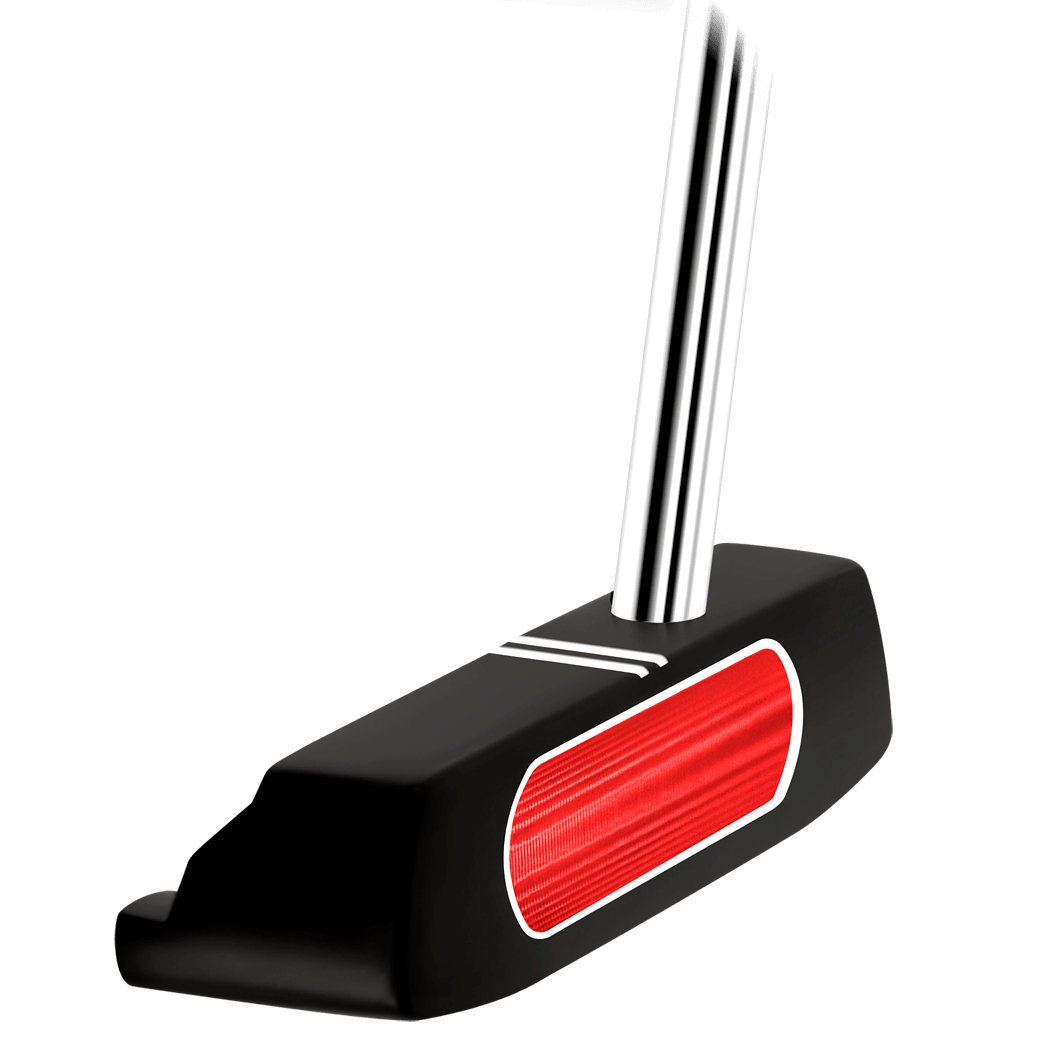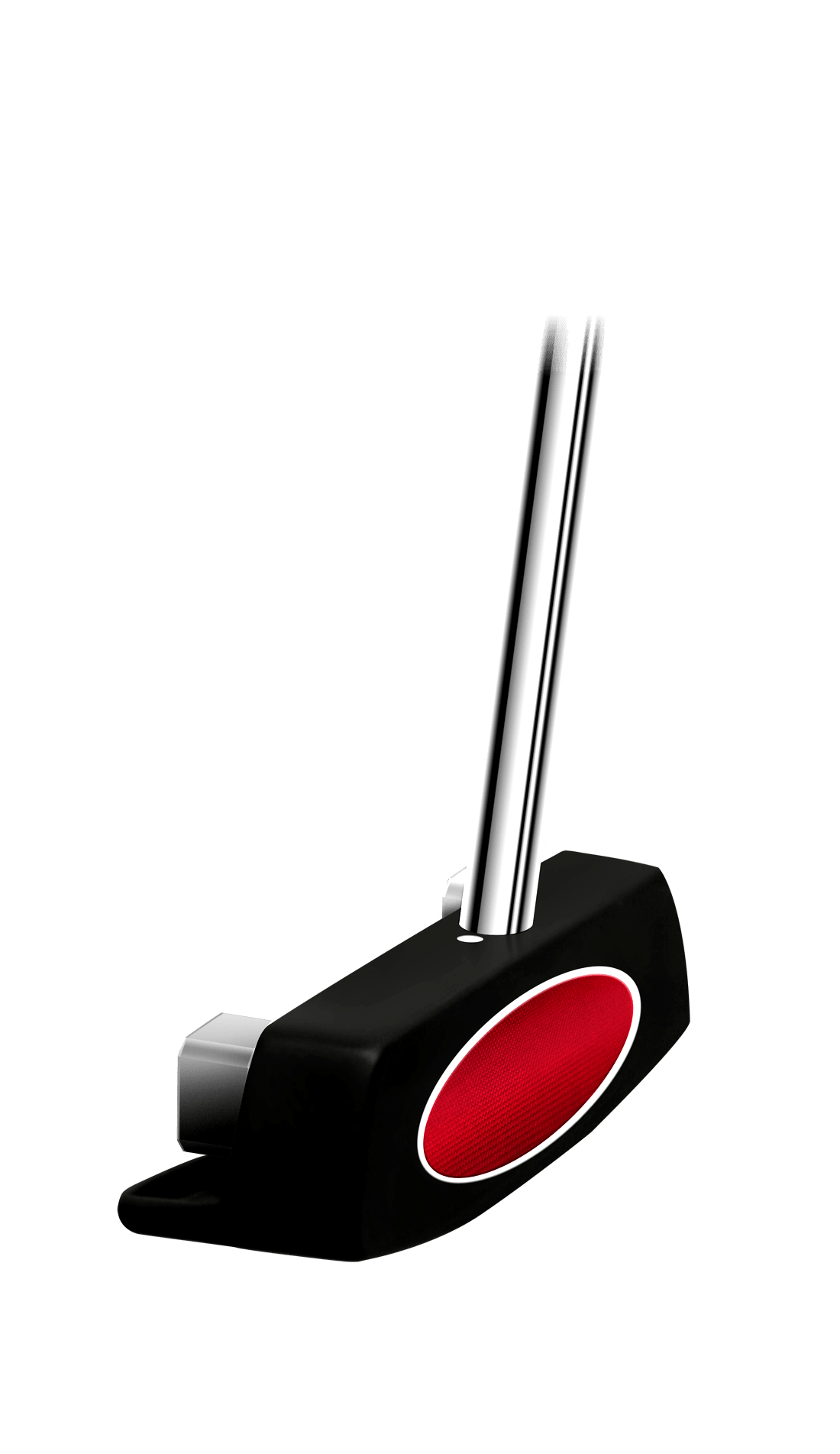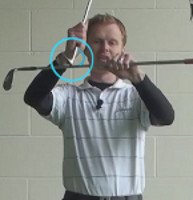
Bounce is a widely used golf equipment term that confuses many golfers. Here’s what it means and why it’s important.
Simply put, bounce is created when the trailing edge of a club’s sole is lower than its leading edge. The effect is that the leading edge will be off the ground when the club is placed flat. Bounce is measured in degrees; the higher the degree, the deeper the trailing edge.
Understanding bounce is key when choosing a sand wedge. As a basic rule, a wedge with a high degree of bounce (14-16°) is best when the sand is deep and/or soft. Less bounce (8-10°) works better from thin or compacted sand.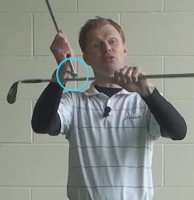 Likewise, a high-bounce wedge is more effective on soft fairways; a low-bounce club is preferred on firmer turf.
Likewise, a high-bounce wedge is more effective on soft fairways; a low-bounce club is preferred on firmer turf.
One’s swing style also factors in when determining how much bounce is best. A player with a relatively steep swing should use a wedge with plenty of bounce, while a sweeping swinger needs less.
Trivia buffs take note: The sand edge was invented by legendary golfer Gene Sarazen, who added bounce to the sole in order to displace more sand as the club slid under the ball.
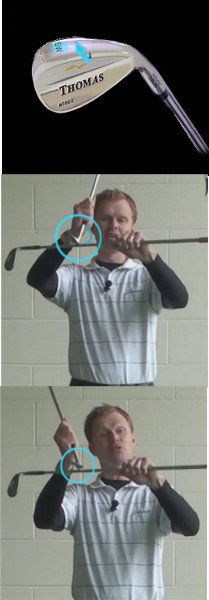
The Complex Topic of Golf Bounce Explained
The term ‘bounce’ when it comes to golf might not mean exactly what you think it does. If you are picturing your ball landing on the green and bouncing into a bunker, that is not the kind of bounce we are discussing here. Rather, bounce is a golf equipment term that is usually referenced in relation to wedges. Understanding what bounce in golf irons is all about, and how much you need, is an important part of building a good set of clubs. Answering the question of ‘how much bounce do I need’ is something that requires thinking about where you live, the style of golf you play, your swing technique, and more. It is complicated, but it can be figured out.
To get started understanding wedge bounce angle, it might be helpful to have a wedge of your own in your hands while you read this. Get your sand wedge and your pitching wedge, and hold them upside down so you get a good close look at the club head of each. Find the leading edge of the club head, which is the bottom of the club face where the club starts to cut through the grass. Now, notice the roll or ‘bulge’ on the bottom of the club that exists from the leading edge back. This roll makes up the sole of your wedges, and the amount of roll is measured in terms of ‘bounce’. A high bounce wedge will have a noticeable roll from front to back on the bottom of the club head, while a low bounce wedge will almost appear to be flat on the bottom.
Depending on the type of wedges that you have, there might even be a marking somewhere on the club head which indicates how much bounce the club has – specifically on the sand wedge. A high bounce wedge, for example, will have perhaps 12* or 14* of bounce, while a low bounce wedge could come in around 8* or 10*. Most likely, you will notice that your sand wedge has more bounce than does your pitching wedge. If you can’t find a number of the wedge itself to tell you how much bounce there is on each of your clubs, you should be able to find out by researching the specific model online.
The following content will explain bounce on a golf wedge in terms of what it does, how it affects the shots you can hit, and what style would suit you best. Trying to decide ‘how much bounce do I need’ in my wedges is a common dilemma for many golfers, and there are good arguments on both sides of the low bounce vs. high bounce debate. Picking the right wedge bounce angle is important if you are going to be able to hit the variety of shots that you are looking for around the greens.
The information below has been written based on a right handed golfer, so please reverse the directions as necessary if you play left handed.
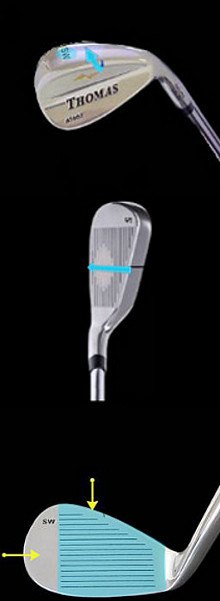
Understanding How Your Wedges Work
When your club hits the ball, there is a three-way interaction going on – your club, the ball, and the ground all play a role in the result of the shot. While you certainly understand that you need to strike the ball as cleanly as possible with the center of the club face, you also need to make sure that you don’t catch too much of the turf on the way through. If you allow the leading edge of the club to stick into the ground before you make contact, you will hit what is called a ‘fat’ shot. Fat shots almost always come up short of the target, and may even go just a few feet in front of you if they are hit fat enough.
This is where bounce comes in to play. As your wedge is swinging down into the ball, the bounce helps to skip the club across the top of the turf so it doesn’t get stuck before you are able to hit the ball. In fact, this is why it is called ‘bounce’ in the first place – it helps the club bounce off the ground and slide through the impact area properly. When used correctly, and under the right conditions, bounce can definitely be your friend.
Of course, it isn’t quite that simple. If your club head bounces too much off the turf prior to impact, you may hit the ball thin and send it flying well beyond your intended target. In some cases, this can actually be worse than hitting the ball fat. Every golfer knows the feeling of catching the ball with the leading edge of the club and looking up to see a line drive go shooting past the green and into deep trouble. Line drives are great in baseball, but they are almost always trouble on the golf course.
To get a better idea of how the bounce works on your wedges, let’s look at the comparison of low bounce vs. high bounce wedges. Once you understand the pros and cons of each, you should have a clearer picture of the issue as a whole.
- High bounce wedges. There is no specific definition of what makes a wedge ‘high bounce’, but anything with 12* or more of bounce should probably fall into this category. When you set this kind of wedge down at address, you will notice that the leading edge of the club doesn’t sit flat on the ground – instead, it is just slightly up in the air behind the ball. That is because the club is actually sitting on the bounce that has been built into the sole. In general, this is a great wedge to use when playing on soft turf conditions. Soft turf is more likely to grab the leading edge of your club and create a fat shot, so extra bounce can act as ‘insurance’ against that outcome. Also, high bounce wedges tend to perform well from bunkers because that extra bounce works to splash the sand out of the way so you can slice under the ball. The average golfer will probably end up reaching for a high bounce wedge simply because they are more forgiving than low bounce wedges in the greatest number of situations.
- Low bounce wedges. If you looked into the bag of most players on the professional tours, you would likely find a collection of low bounce wedges. For one thing, professionals possess the needed skill to strike the ball cleanly with this kind of design. Also, most pro tournaments are contested in nice weather environments on courses with firm course conditions. When the ground is hard, you don’t need the insurance that a high bounce wedge can offer, so you should probably opt for the low bounce model instead because it will make it easier to get under the ball. Around the green on chip shots, low bounce wedges help to get spin on the golf ball because of how cleanly they can strike the shot – when executed correctly. Generally, the stakes are just higher when using this kind of wedge. You can hit great shots, but you can also hit some ugly ones if you are unable to make solid contact.
To make it as simple as possible, high bounce wedges are used more by average players in soft conditions, and low bounce wedges are favored by better players on firm turf. Obviously, there is way more to the equation than that, and there is plenty of room for personal preference when making the decision as to what will go in your own bag. However, that framework should give you a basic understanding to start from.

A List of Shot Options
One of the reasons why it is so much fun to play wedge shots on the golf course is simply the variety that is available to you on a given shot. With the requisite skill and preparation, there are a number of different types of wedge shots you can try to use throughout a round. A good player will be able to match the shot they hit to the situation they are facing, in order to get the ball as close to the hole as possible. Following are a few different wedge shot types, along with which style of wedge will be better suited for the job.
- Full wedge shot. This is just a normal swing wedge shot, from whatever distance is appropriate for your swing. For this shot, it doesn’t matter so much what kind of wedge you are using, as long as you make good contact. You can play good full shots with low bounce or high bounce wedges, regardless of turf conditions. However, if you are playing on particularly soft turf, you will have a little more margin for error when you carry a high bounce wedge. Even still, no club can save a bad swing from producing a poor shot in the end.
- Pitch shot. Most golfers would consider a pitch shot to be one that is played anywhere from 15-30 yards or so away from the green. For the average golfer, using a high bounce wedge should make pitching the ball far easier. Pitch shots tend to be a challenge for many amateur players, and you probably know the feeling of hitting a pitch shot fat and watching it fall well short of your intended target. Unless you play most of your golf on hard turf conditions, a high bounce wedge will make pitching the ball easier.
- Chip shot. For chip shots around the green, it is going to depend on the kind of lie that you have drawn in the grass. Shots played off of a tight fairway lie might be easier with lower bounce because you can pick the ball right off the turf and impart some spin on the shot. However, higher bounce wedges tend to make chip shots from the deep rough a little easier to handle. The bounce can slide through the grass somewhat like a bunker shot and help you loft the ball onto the green.
- Bunker shot. As mentioned earlier, high bounce wedges tend to be the optimum choice when playing from the sand. With that said, low bounce wedges are going to do better when the sand is hard packed – such as after a rainstorm. Trying to play a high bounce wedge from a hard packed bunker can be a nightmare because the bounce may make it impossible for you to get the club under the ball properly. From soft sand, though, there is no replacement for a wedge with plenty of bounce.
- Flop shot. This might be the one shot where a low bounce wedge is really the only good option. If you were to try and hit a flop shot with a high bounce wedge, that bounce may prevent you from getting under the ball like you need to – and a thin shot over the green is the likely outcome. Most wedges have effectively more bounce when you lay them open, like you need to when playing a flop shot. There is nothing easy about hitting a flop shot with a low bounce wedge, but at least you will have a chance.
As you might have noticed, there isn’t a clear winner between high bounce and low bounce wedges as far as which one will help you hit all of the various shots you can encounter. This is where picking wedges becomes a dilemma – how do you make sure you have the right club for the job at all times? Or even most of the time? Suddenly, it doesn’t seem so easy to pick between the selection of wedges hanging on the wall at your local golf shop.

What Style of Game do You Play
One element that hasn’t been covered yet in this discussion is the style of game that you play, and the technical details of your swing. Both of these things have a great deal to do with which style of wedge you are going to fare better with in the long run. The wrong wedge for one player might be the perfect choice for another, so this isn’t a case of right or wrong across the board.
The first thing to think about is how you like to hit the golf ball for the majority of your shots. Do you hit down aggressively into the turf, taking a large divot? Or to you slide the ball across the top of the grass, picking it clean and taking very little divot along the way? These are two drastically different styles, and you should be able to quickly answer the question of which type of player you are. If you play with a strong downward attack into the ball, a low bounce wedge is likely the better option. Hitting down through the ball means the bounce of the club won’t come into play very often anyway, so having a low bounce club will give you more options for other shots.
On the other hand, you will probably prefer a high bounce club if you like to slide the club across the grass more through impact. With this style, it is more likely that the bounce will be able to benefit you from time to time and prevent you from catching a shot fat now and then. Unless you play on particularly hard turf, the high bounce choice should make it easier to strike the ball cleanly from the fairway with this kind of swing.
The other element to consider here is the types of shots that you like to hit. Are you a player that prefers low shots into the green with plenty of spin? Or do you try to hit higher, softer shots that don’t have much spin but stop quickly because of the loft that you put on the shot. Again, these are two divergent styles, and each can benefit from a different wedge. As you might be able to guess by this point, the low shot with a high spin rate is easier to achieve with a low bounce wedge, and the high, soft shots are easier with a high bounce club. That is not to say that you can’t hit the other kind of shot with the opposite wedge, but pairing the right wedge with your style will make the shots as easy as possible to execute.
As far as picking the right bounce in golf irons for your game, and specifically with your wedges, it comes down to a variety of factors including your playing ability and personal style. Now that you know the answer to the question of ‘what does bounce mean in a golf wedge’, you can make a more-educated decision for your own game.

Building Your Set
When buying a full set of irons, the bounce angle shouldn’t be much of a concern. You should go with the wedges that you are comfortable hitting, that give you good results, and that fall within your price range. Considering most full sets of irons don’t have very much variance in their bounce angles, this isn’t a factor that needs much consideration.
It is a different story, however, with your wedges. By this point, you should understand that you need to include bounce as one of the major factors that helps you pick the wedges you will carry in your bag. But do you have to have the same bounce on all of your wedges? Certainly not. In fact, varying the bounce angles between the different wedges you decide to carry is one of the best ways to give yourself the most possible options on the course.
Let’s assume that you carry a set of irons that ends at pitching wedge. From there, you will probably want to carry two additional wedges with lofts somewhere between 52* and 60*. For most players, it will make sense to pick one wedge that has a high degree of bounce, and one that has low degree of bounce. That way you aren’t stuck with only one choice when you get out on the course, and you can vary your shot selection depending on conditions and situations. Naturally you will need to practice with both of these clubs to get comfortable using them, but that is a challenge that can certainly be conquered.
Most likely, you are going to want to find a high bounce wedge for your higher lofted club, and a lower bounce wedge for the lower lofted club. You can certainly use your own personal preference in this case, but many players are successful with a combination of a 52* low bounce wedge and a 58* high bounce wedge. Alternatively, you could pair a 54* with a 60*. You don’t want to get the lofts of the two wedges too close together, or they will start to serve the same purpose in your bag.
Hopefully you now have an answer to the question of what does bounce mean in a golf wedge. Also, you should have a good idea of how to build your own set of wedges so that you can hit as many different shots around the course as possible to escape from tough situations and get your ball close to the hole. It can be tricky at first to explain bounce on a golf wedge, but the concept is relatively simple in the end. Spend a little bit of time paying attention to the bounce on the wedges you have now, and what you like and don’t like about the way they perform. Then, when you are ready to purchase some new wedges later on, you will know exactly what you want to look for. Fortunately, club makers have created an incredible number of different wedge designs and bounce angles for you to try, so there is no lack of options on the market. Find the right combination of wedges for your bag, and the game will get just a little bit easier.






